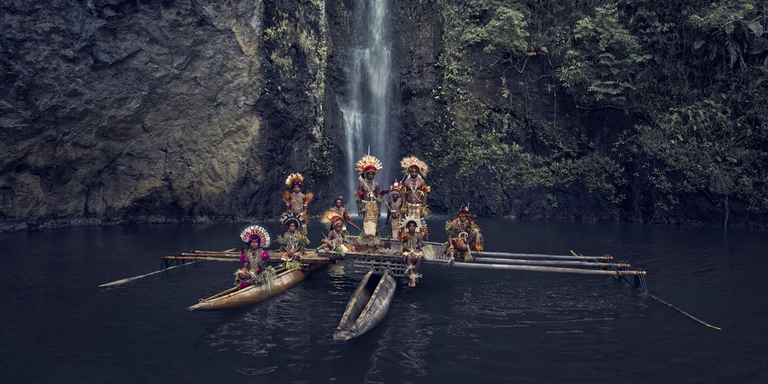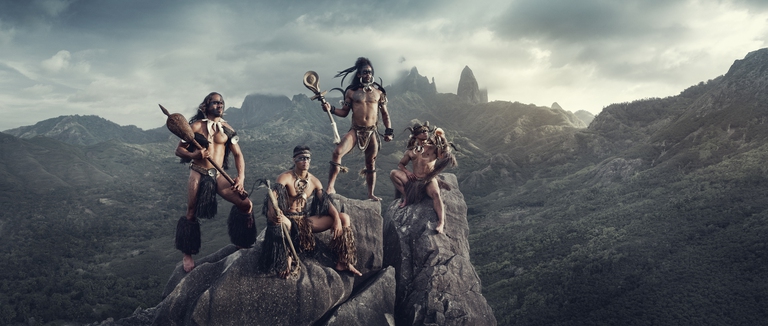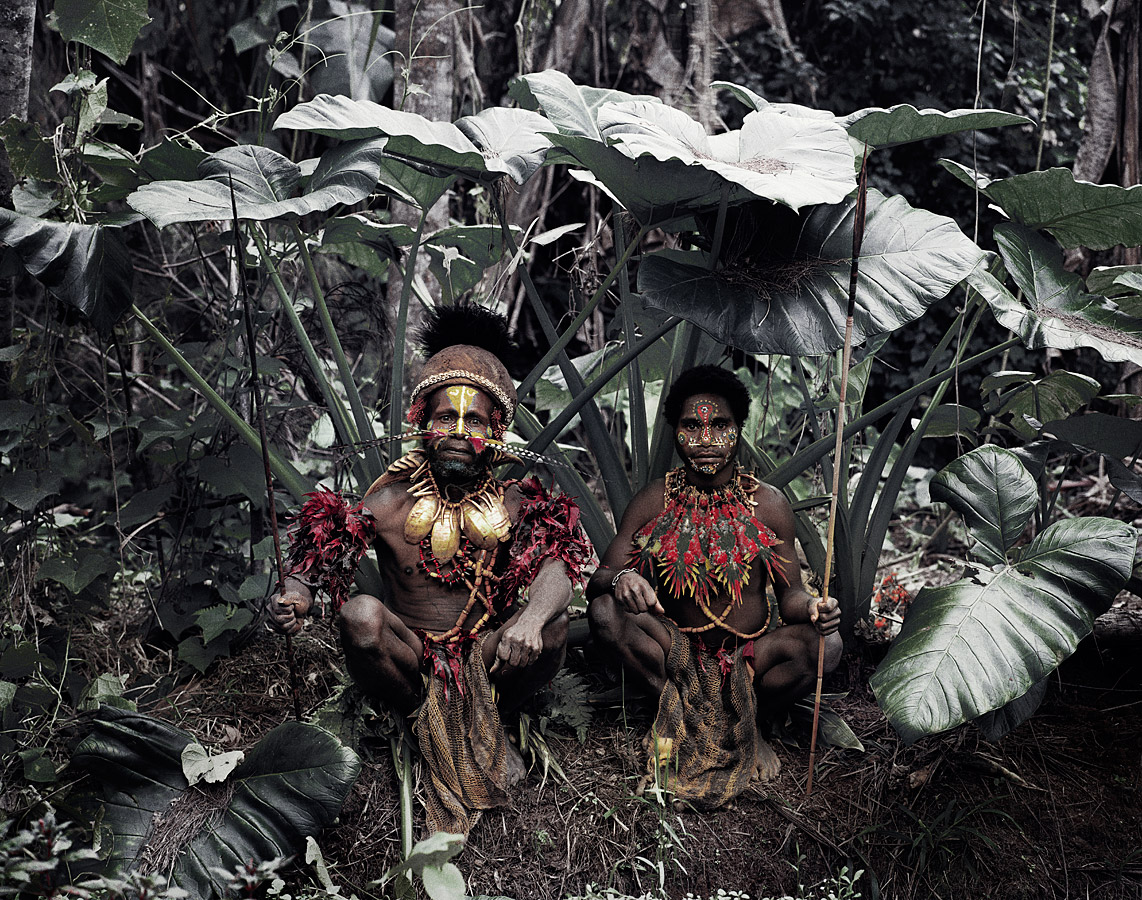
A special report from the Yuqui territory delves deep into the dreams, challenges, joys and sadness of one of Bolivia’s most vulnerable indigenous groups.
Photography has always had the incredible power of touching the hearts of people of all nationalities, languages and ages, while being a tool to create awareness on the most varied issues. And this is what British photographer and photojournalist Jimmy Nelson is trying to do by visiting the Planet’s remaining indigenous cultures. Through his lens, he shows us the value
Photography has always had the incredible power of touching the hearts of people of all nationalities, languages and ages, while being a tool to create awareness on the most varied issues. And this is what British photographer and photojournalist Jimmy Nelson is trying to do by visiting the Planet’s remaining indigenous cultures. Through his lens, he shows us the value – and beauty – of the world’s cultural diversity.
His images bring us to the world’s remotest corners and testimony the speed with which these communities adapt and change as they relentlessly approach and embrace the future. Nelson’s journeys to visit the world’s tribes have given life to the photo book Before They Pass Away (part 1 and part 2). We talked to him about his vocation, his adventures and connections with indigenous tribes.
You started off your journey as a photographer travelling through Tibet. How and why did you begin to focus on indigenous cultures?
When I was 17 I didn’t start out to be a photographer. I ran away. I had some strange experiences as a child that disconnected me. My hair fell out when I was 16 so my appearance changed and I was very creative so some people thought I was stupid. I wasn’t a happy teenager. I disappeared to Tibet not because there were indigenous peoples but because there were monks there with no hair. It was a connection. My journey was a process of reconnection: who am I? How do I look? How do you see me? How do I see you? And my camera was a metaphor for recording who I met. On the journey of two years, more people gave me love and kindness than had ever given me before in my own culture. So maybe today, 33 years later, I’m still doing the same. I’m not an anthropologist, I’m not an ethnologist. I’m selfishly trying to keep reconnecting with people who are humanly very rich and real.
The book Before They Pass Away part 1 is about 35 chosen indigenous communities. How did you select them and how did you contact them?
They were meant to be a visual kaleidoscope of geographical diversity: the world’s most colourful and the world’s most isolated cultures in varying landscapes. The whole idea is an aesthetic cross-section. I’ve connected to them through the experiences I’ve had by spending my whole life travelling. So I know roughly where they are but I leave it to chance when I get there to see what happens. The second part of the project – Before they pass away part 2 – which is coming out next autumn, is about 85 more indigenous groups. But now people are approaching me: “Visit us. We’re special, we’re unique”. And in part 2 I’m returning to some of the tribes in the first book to complete the circle of discussion.
When you photograph indigenous people, are they in their “Sunday dress” or do they actually live like that?
I argue it’s 80 per cent real and 20 per cent their Sunday dress. For example, I can come to your house to photograph you on Saturday morning after you’ve been to a party the night before, your hair isn’t done up and you’re wearing your pyjamas. This is real. Or I can say “I’ll come on Sunday at 1 o’clock, be prepared, go to the salon, buy a nice shirt because I want to take very beautiful pictures of you”. This is also real, but with preparation.
How do indigenous communities react to your work?
They’re grateful. Then, they all have an opinion. They say, “right, you think we’re special. We aren’t sure whether we are or we aren’t special. Are we rich? Are we poor? Where should we go? Should we stay or move to the city?”. So there’s big discussion. They’re a little bit confused because now almost all of them have access to the world. Many of them have telephones and some even smartphones. So visually they realise that the world is becoming homogeneous. So they say, “is our identity and authenticity important or should we leave it behind?”.
Have you ever been rejected?
I’ve never been rejected, but I rejected myself from the aborigines in Australia because I wasn’t comfortable, they didn’t want to be photographed, they were insecure. Their history and politics is very complicated. So I didn’t push myself. I could have taken the picture. But it’s not just about taking a picture, it’s about a connection.
What community has impressed you the most? And which is the one you learned from the most – and what did you learn?
I can’t choose one, because each one is different, each one has a different world. One lives in the heat, one lives in the cold. One is in the nearest city, one is further away. But something very special happened very recently when I went back to the Kazakhs in Mongolia. They were very kind when I first went to visit them because it’s very cold there and I wasn’t prepared, so they took me in. When I went back they said, “thank you for coming back” and then they told me: “We’re now online. We heard you talking about us. And now people from around the world come visit us, asking us to make a ‘Jimmy picture’. We charge for this picture but you have given us an identity, again. We feel proud to be who we are. And we can make a living now holding on to our culture. Because we were close to leaving it behind and moving to the city. We actually want to stay here but we want to find a way to financially realise staying as we develop”. So we’re learning from each other. They’re teaching me and I’m teaching them.
Are there indigenous communities you photographed that have already vanished?
This is a very difficult question to answer because everything we’ve photographed and filmed has changed. For example, there are many Himba in the media but only one per cent lives like traditional Himba. They’re all leaving their traditions and environments very quickly. They’re not vanishing as people. I titled the book and everyone goes, “nobody’s dying”. I know nobody’s dying. Something is dying. But even then it’s not definitive because it is evolving and changing.
How do you feel about that? You carry a sort of burden as you see and get to know cultures that you know could no longer be there tomorrow.
I see it in the other way, I see no burden. People say: “How can you go there? You show them to the world”. I say, well, the world knows everything anyway. We’ve evolved and become globalised and digitalised. So there are no more secrets. I could build a wall around you and leave you in a bubble. But this doesn’t work. This is disconnection. I would say: “Break down the walls. Make everybody know where we all are. And make sure these people know how special they are”. To be proactive and not inactive. We have to talk to these people, we have to tell them “don’t go away!”, and teach them how special they are.
We’ve come across some criticism directed at you from the NGO Survival International. Why do you think your work can be misunderstood?
The criticisms came at the very beginning. Survival International didn’t investigate what I was doing. They just judged us. I would say what I’m doing is about judgement: “Don’t look at me and judge me, I’m not going to look at you and judge you, don’t look at them and judge them because they’re black and naked”. So Survival International was a hypocrite because if they had looked further they would’ve realised that we’re trying to do the same thing. We’re trying to realise a better understanding and an education for them and for us. But I don’t do this by screaming and yelling and saying “everybody is dying and it’s all your fault”. I try to do it the other way round. I say something remaining is still very beautiful and we have to understand that. With the Foundation we try to raise money to send young, creative cinematographers and photographers into the world of tribes to teach them to photograph and film themselves to make an online digital library, like a sort of “Google for tribes”. So in the future they and we will have access to their traditions, so they don’t lose them.
Have you ever experienced first-hand some of the struggles these indigenous communities are facing?
The reason why every indigenous tribe (and culture) is remote is that they live on the world’s last untouched natural resources. The two end up becoming one. But if you only focus on natural resources you forget about human beings. So we have to focus on their values, too. For example, in Ecuador the government wanted to remove the Huahorani who live in the jungle. They said, “we don’t need this community because they sit on oil and gas”. A consultant came in and said, “it’s probably a more valuable and sustainable asset in the longer term if you leave them there and protect the rainforest than exploit it for mineral resources”. In the short term, gain of mineral resources; in the long term, loss in losing a culture, a heritage and a tradition. In the end they decided to leave them there. So this is about education. Having the world’s last untouched rainforest with the tribe living in it would be much more valuable. But I don’t focus on the politics because I would never win, because it’s just me. I try to do something more romantic and bigger.
So, photography is a powerful tool to help them?
Yes, photography is a metaphor. The whole world understands pictures. The whole world has become a photographer. The whole world isn’t a politician, the whole world isn’t a logger or an oil man. But if we start a momentum of respect and appreciation of beauty then I think we have more power than going on in the political debate.
You also visited an indigenous community in The Netherlands. This is impressive because we always think these cultures are far from us.
There are people in Holland who still wear traditional clothing, but they obviously have cars and telephones. There’s a fine line, they’re not off the grid but it’s more like active cultural respect. The world is becoming the same and I think that the rich diversity and authenticity are extremely valuable. So whether you’re a tribe or you wear traditional clothes in the Western world is the same thing. They’re keeping their diversity and authenticity. And the journey I’m on is also going to the end of the world and then coming back to this one. Both worlds are important.
Before They Pass Away part 2 will be produced next autumn. What’s new compared to the first book?
We’re two thirds of the way through the production and until May we have another seven trips: to the Amazon, to Siberia, to Africa. What’s exciting is that we filmed everything with virtual reality cameras. So wherever I’ve gone there’s a 360 degrees film. And we’re going to build an app. When you look at a picture you like in the book and you want to know more about the person in the picture, the app activates a 360 degrees film on your phone. So it becomes an interactive book where you can come with me to these spaces.
What is the Jimmy Nelson Foundation?
We established the foundation a year ago, but we’re growing. I hope that in five years’ time the foundation will be bigger than the project, with hundreds of people travelling around the world teaching these tribes to film and photograph themselves to preserve their traditions. The foundation will simply create a digital library, like a Google or a Wikipedia for tribes. So I’m not giving money back, I’m not building schools or water wells, I’m carrying on doing what I do here, making this visual library of films, pictures, sounds, traditions, languages.
What can we all do? What is your call to action?
If you’re curious, if you’re hungry, if you’re young, if you’re daring, and if you care and want to do something sustainable, come and join the foundation, present us your ideas, and we’ll see if we can send you to these places to make more films and more pictures. I don’t know if what I’m doing is right, I don’t have all the answers, but I want to take you with me so that you get a better insight into the world I go to and that we all start asking more questions together.
Siamo anche su WhatsApp. Segui il canale ufficiale LifeGate per restare aggiornata, aggiornato sulle ultime notizie e sulle nostre attività.
![]()
Quest'opera è distribuita con Licenza Creative Commons Attribuzione - Non commerciale - Non opere derivate 4.0 Internazionale.
A special report from the Yuqui territory delves deep into the dreams, challenges, joys and sadness of one of Bolivia’s most vulnerable indigenous groups.
The Yuqui people of the Bolivian Amazon fight not only to survive in the face of settlers, logging and Covid-19, but to preserve their culture and identity.
Jair Bolsonaro is accused of crimes against humanity for persecuting indigenous Brazilians and destroying the Amazon. We speak to William Bourdon and Charly Salkazanov, the lawyers bringing the case before the ICC.
Activists hail the decision not to hold the 2023 World Anthropology Congress at a controversial Indian school for tribal children as originally planned.
Autumn Peltier is a water defender who began her fight for indigenous Canadians’ right to clean drinking water when she was only eight years old.
The pandemic threatens some of the world’s most endangered indigenous peoples, such as the Great Andamanese of the Andaman and Nicobar Islands in India.
The Upopoy National Ainu Museum has finally opened. With it the indigenous people of Hokkaido are gaining recognition but not access to fundamental rights.
A video shows the violent arrest of indigenous Chief Allan Adam, who was beaten by two Royal Canadian Mounted Police (RCMP) officers.











